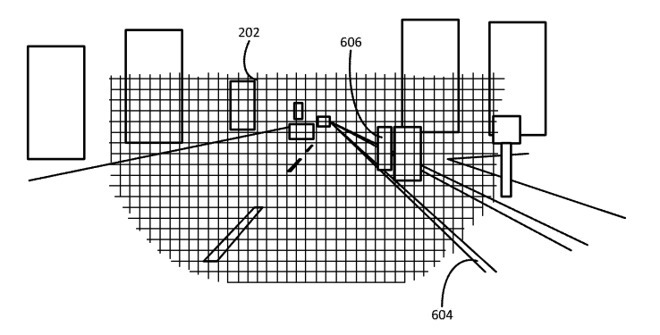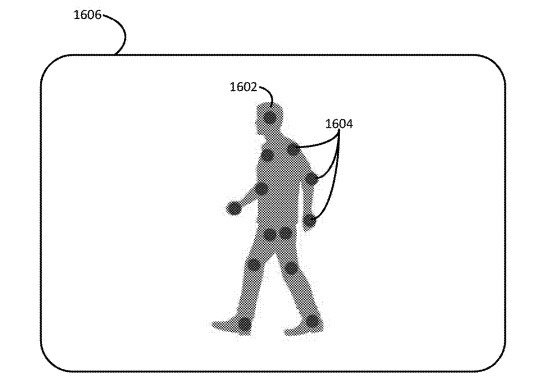Apple Car could make road hazards brighter and easier to see for drivers
Apple's long-rumored car could have a headlight system that provides drivers with more awareness of the road, by highlighting areas of interest ahead of the vehicle by making the light shining from the headlights brighter specifically in those regions.

While most of the speculation of what Apple's ongoing automotive efforts have come up relate to the design of the vehicle and its self-driving capabilities, Apple has considered ways to make the driving experience itself better. One of those ways is to make it safer to drive the Apple Car, by informing the driver of road events.
While most cars will provide extra data in the form of indicators in the dashboard, alarms, and even on infotainment displays, most of these provide relatively limited information, and in a fashion that requires drivers to take their eyes off the road. In all cases, this also diverts the driver's attention away from the possible road obstruction or other vehicles, making it hazardous.
Granted by the US Patent and Trademark Office on Tuesday and first applied for in May 2018, the patent for "System and method for light and image projection" proposes a way of keeping drivers aware of road-based dangers without pulling their view away from it. Instead, Apple suggests it could modify light emitted by the headlights to highlight parts of the road that may be worth closer examination by the driver.

An example of areas a car could detect and deem worthy of illuminating for the driver
For the system, the vehicle is fed data about what is on the road ahead of it and to the sides, via an array of sensors similar to what would be used for a self-driving vehicle system. The data is fed into a system to analyze a street scene, one that could determine how the vehicle should move ahead, as well as accounting for the velocities of any road obstacles.
In one way, the vehicle's headlamps could shine an "illuminated indicator" at the point of interest for the driver, which could also offer a way to identify what the item is if the driver is unsure. For example, it could use a symbol or lighting scheme to differentiate other vehicles from pedestrians.
It is also proposed the contrast of the illuminated scene could be modified to better suit the driver's view. The system could use sensors to make sure everything is lit evenly, taking into account weather effects, exterior lighting, and reflectance.

The lighting system has the potential to use RGB laser diodes to shine light in specific places, and in different patterns
While these illuminations could indicate areas of the road that need attention, the same system could be employed to offer more contextual information to the driver, such as shining the next turn instruction from a set of navigations on the road itself. As a byproduct of this, other drivers and road users will be able to see the instruction on the road, and could take the opportunity to fine tune their driving plans.
Rather than fully illuminating a pedestrian, the system could elect to highlight small dots at the main joints of their skeleton to show of their presence to the driver. By placing the dots at joints and tracking them, this means the system could show the driver the movements of the pedestrian, such as waving or their walking gait.

How the system could shine dots on pedestrians
Apple files numerous patent applications on a weekly basis, but while it does demonstrate areas of interest for Apple's product research and development efforts, it is not a guarantee the concept will appear in a future product or service.
The patent credits Daniel E Potter, Clarisse Mazuir, Matthew E. Last, Ricardo da Silveira Cabral, Paul Furgale, Christy F. Cull, Daniel J. Reetz, and Matisse J. Milovich as inventors.
Of the inventors, Last is the most prominent name in terms of Apple patent filings relating to cars, having been listed in connection to a system for using infrared-transparent layers in car designs, a type of LiDAR system, new designs for side mirrors, and environmental sensors, among others.

While most of the speculation of what Apple's ongoing automotive efforts have come up relate to the design of the vehicle and its self-driving capabilities, Apple has considered ways to make the driving experience itself better. One of those ways is to make it safer to drive the Apple Car, by informing the driver of road events.
While most cars will provide extra data in the form of indicators in the dashboard, alarms, and even on infotainment displays, most of these provide relatively limited information, and in a fashion that requires drivers to take their eyes off the road. In all cases, this also diverts the driver's attention away from the possible road obstruction or other vehicles, making it hazardous.
Granted by the US Patent and Trademark Office on Tuesday and first applied for in May 2018, the patent for "System and method for light and image projection" proposes a way of keeping drivers aware of road-based dangers without pulling their view away from it. Instead, Apple suggests it could modify light emitted by the headlights to highlight parts of the road that may be worth closer examination by the driver.

An example of areas a car could detect and deem worthy of illuminating for the driver
For the system, the vehicle is fed data about what is on the road ahead of it and to the sides, via an array of sensors similar to what would be used for a self-driving vehicle system. The data is fed into a system to analyze a street scene, one that could determine how the vehicle should move ahead, as well as accounting for the velocities of any road obstacles.
In one way, the vehicle's headlamps could shine an "illuminated indicator" at the point of interest for the driver, which could also offer a way to identify what the item is if the driver is unsure. For example, it could use a symbol or lighting scheme to differentiate other vehicles from pedestrians.
It is also proposed the contrast of the illuminated scene could be modified to better suit the driver's view. The system could use sensors to make sure everything is lit evenly, taking into account weather effects, exterior lighting, and reflectance.

The lighting system has the potential to use RGB laser diodes to shine light in specific places, and in different patterns
While these illuminations could indicate areas of the road that need attention, the same system could be employed to offer more contextual information to the driver, such as shining the next turn instruction from a set of navigations on the road itself. As a byproduct of this, other drivers and road users will be able to see the instruction on the road, and could take the opportunity to fine tune their driving plans.
Rather than fully illuminating a pedestrian, the system could elect to highlight small dots at the main joints of their skeleton to show of their presence to the driver. By placing the dots at joints and tracking them, this means the system could show the driver the movements of the pedestrian, such as waving or their walking gait.

How the system could shine dots on pedestrians
Apple files numerous patent applications on a weekly basis, but while it does demonstrate areas of interest for Apple's product research and development efforts, it is not a guarantee the concept will appear in a future product or service.
The patent credits Daniel E Potter, Clarisse Mazuir, Matthew E. Last, Ricardo da Silveira Cabral, Paul Furgale, Christy F. Cull, Daniel J. Reetz, and Matisse J. Milovich as inventors.
Of the inventors, Last is the most prominent name in terms of Apple patent filings relating to cars, having been listed in connection to a system for using infrared-transparent layers in car designs, a type of LiDAR system, new designs for side mirrors, and environmental sensors, among others.

Comments
Inside the vehicle it would be unveiling right now to drive without any lights on. There are still plenty of troglodytes that still believe they are better drivers than any autonomous system with hundreds of sensors and dozens of computers constantly monitoring it's own surrounding, the data from other autonomous vehicles around them, and GPS to determine the best possible action at all times.
The third brake light. Mandatory on cars since 1986, but based on studies by John Voevodsky at Caltech in the 1960s. Today, when you apply the brakes, the brake lights are activated. When you apply them harder, the brake lights glow with increasing intensity. I haven’t seen a recent study but an old one showed 200,000 fewer accidents, 60,000 fewer injuries, $600M fewer dollars spent on repairs from rear end accidents.
A second low tech solution is the lime shades now used for protective vests by first responders and just us ordinary folks walking our dogs at night.
Any "Apple Car" will, at most, be a joint venture with a current auto company (I heard from a BMW employee that the i3 was supposed to be the first such mash-up, but negotiations over the costs and profit sharing fell through). Apple is not a car manufacturer, and it would take an enormous amount of resources for them to become one. Their best option would be to buy Tesla or some such if they really wanted to make a go of it.
I believe this is disabled in US-market cars, but the software is definitely still there. I know somebody who has it enabled on his car (a 2011). It's a checkbox in VCDS.
It's also potentially worth noting Audi already has headlights which do this, though with lower precision than Apple is talking about. They have had matrix LED headlights since 2013. Cars with this technology in their headlights are physically available in the US, but dumbed down because the federal government hasn't approved them yet. It's a little frustrating, but caution is generally a good idea.